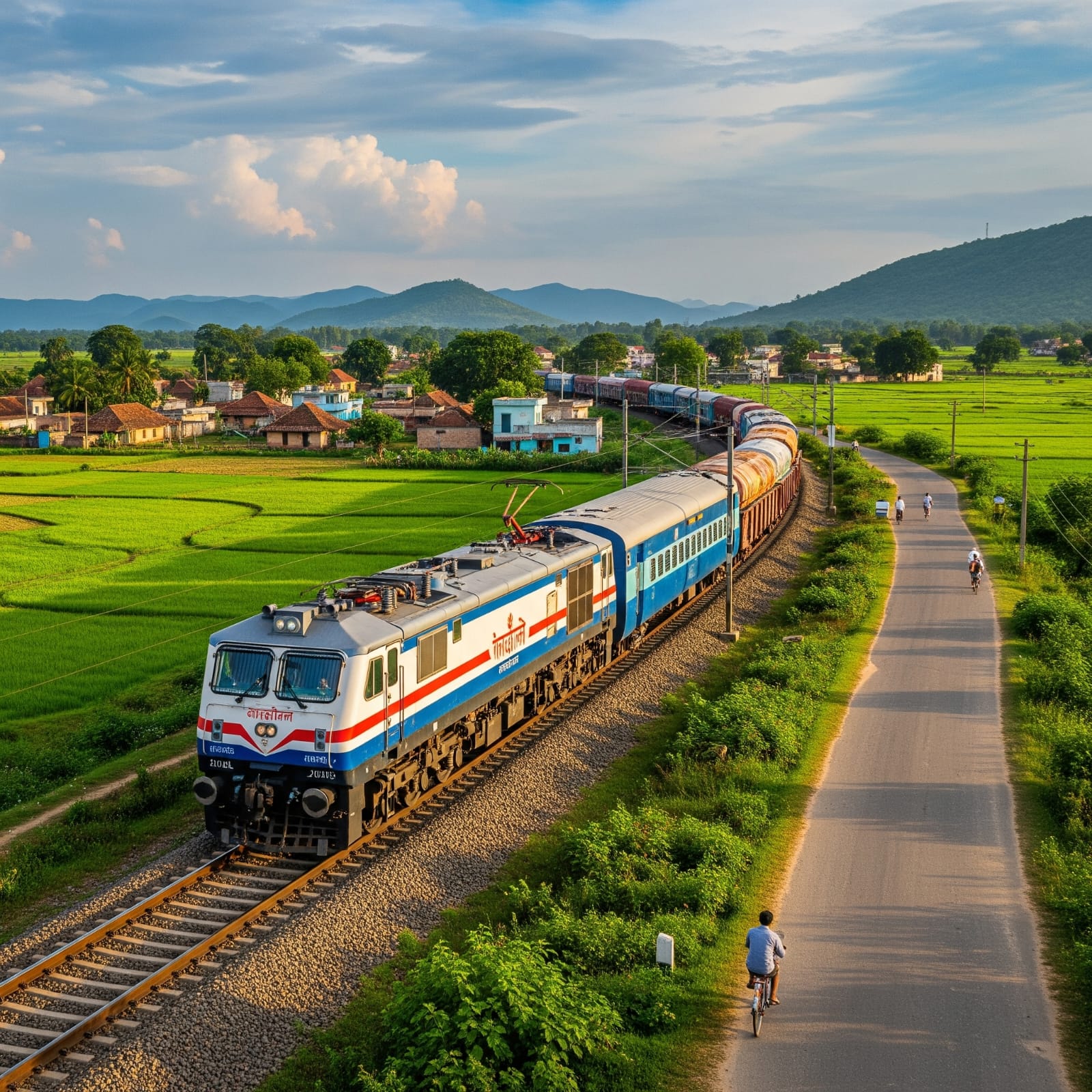Blog Details
- Home
- Blog Details

- Member
- August 8, 2025
The High Tech Mixed Train that Improves access environment and reduces cost
The High-Tech Mixed Train: A Green Logistics Solution for Modern
India
The concept of a "mixed train," carrying both passengers and freight, is poised for a
significant comeback. Historically phased out due to technical limitations, this model can be
reimagined with modern technology as a powerful tool for improving logistics, reducing
energy consumption, and promoting environmental sustainability on India's less-trafficked
railway routes. By leveraging today's innovations, we can overcome past challenges to create
a service that is safe, efficient, and economically viable.
Overcoming Historical Hurdles with Modern Technology
The primary obstacles that led to the decline of mixed trains—safety concerns, slow speeds,
and poor passenger comfort—are now solvable.
● Enhanced Safety and Comfort: The critical issue of dangerous jerks caused by uneven
braking can be eliminated by implementing Electronically Controlled Pneumatic (ECP)
brakes. Unlike traditional systems, ECP brakes apply braking power simultaneously and
evenly to every wagon and coach. This technology eradicates longitudinal shocks,
dramatically improving both safety and passenger comfort.
● Optimal Speed: To ensure the train runs at a suitable speed for passenger service, all
freight wagons on these routes must be equipped with high-speed bogies. These
modern bogies are designed to operate safely at speeds of 100-120 km/h, aligning them
with the operational speeds of express passenger trains on regional lines.
● Streamlined Operations and Security: The use of containerization for all freight is key.
Sealed containers prevent dust and spillage, secure cargo, and allow for rapid loading
and unloading through modular blocks rather than time-consuming shunting of individual
wagons.
● Improved Passenger Experience: To further enhance comfort, a specialized "buffer
car" can be positioned between the passenger and freight sections to insulate against
any residual noise and vibration.
The Triple Bottom Line Advantage: Logistics, Energy, and
Environment
A modern mixed train service offers a compelling business case, especially for connecting
India's hinterland.
1. Efficient Logistics: On low-density routes, deploying a single, high-tech mixed train is
far more cost-effective than running two separate, and likely under-capacity, trains. This
consolidation of services reduces operational costs related to crew, fuel, and track
access, making economically marginal routes viable.
2. Energy Conservation: This model inherently reduces energy consumption. By using a
single locomotive to haul what would have previously required two, Indian Railways can
achieve significant energy savings, contributing to its goals of operational efficiency and
reduced reliance on fossil fuels.
3. Environmental Sustainability: The environmental benefits are profound. Shifting freight
from road to rail is a core tenet of green logistics. Each ton of cargo moved by a mixed
train means one less truck on local and often ecologically sensitive roads. This leads to a
direct reduction in carbon emissions, less air pollution, and decreased road congestion
and maintenance costs.
Suggested Pilot Routes for Indian Railways
To test and prove this concept, Indian Railways could initiate pilot projects on routes that
exhibit moderate passenger demand and untapped freight potential. The ideal routes would
connect agricultural or industrial production centers with larger markets.
● Silchar (Assam) to Jiribam (Manipur): This route is crucial for connecting Manipur to
the national rail network. A mixed train could efficiently transport both passengers and
essential goods (like food grains, cement, and consumer products) into the state,
reducing reliance on the often-congested and landslide-prone highway.
● Gandhidham to Bhuj (Gujarat): This route in the Kutch region connects a major port
and industrial area (Gandhidham/Kandla) with a significant commercial and tourist hub
(Bhuj). A mixed service could cater to passenger traffic while also providing a last-mile
solution for containerized cargo destined for local industries and businesses.
● Madurai (Tamil Nadu) to Bodinayakkanur (Tamil Nadu): Recently converted to broad
gauge, this line runs through a region known for its extensive spice and cardamom
plantations. A mixed train would be ideal for transporting local agricultural produce to the
major market and rail hub of Madurai, while simultaneously serving passenger needs in
the region.
● Rohtak (Haryana) to Bikaner (Rajasthan): This route connects an industrial and
educational hub in Haryana with a major city in Rajasthan. It could be used to transport
finished goods and raw materials for industries in both regions, while also serving as a
vital passenger link.
By launching these pilots, Indian Railways can gather valuable operational data and showcase
the immense potential of the high-tech mixed train as a cornerstone of its future logistics and
sustainability strategy.
